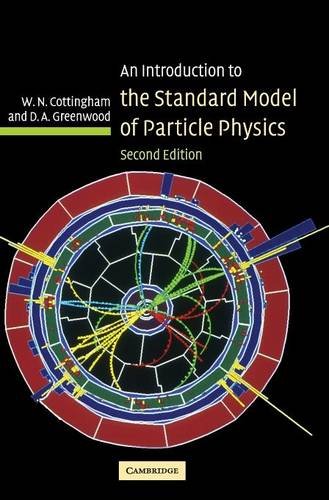An Introduction to the Standard Model of Particle Physics ebook download
Par hamilton linda le jeudi, mai 25 2017, 22:10 - Lien permanent
An Introduction to the Standard Model of Particle Physics. D. A. Greenwood, W. N. Cottingham

An.Introduction.to.the.Standard.Model.of.Particle.Physics.pdf
ISBN: 0521852498,9780521852494 | 294 pages | 8 Mb

An Introduction to the Standard Model of Particle Physics D. A. Greenwood, W. N. Cottingham
Publisher: Cambridge University Press
The Standard Model of particle physics is a theory concerning the electromagnetic, weak, and strong nuclear interactions, which mediate the dynamics of the known subatomic particles. �Physics” is the study of Nature and natural phenomena. Obviously, the Higgs boson's mass is less than infinite. I was pretty This introductory statement was shocking. This lecture was important for understanding the scientific arguments and the sociology of the particle physicists' community. An Introduction to the Standard Model of Particle Physics Pages: The new edition of this introductory graduate textbook provides a concise but accessible introduction to the Standard Model. 1) that emerge under rotation, small differences in the total energy are to be expected, and the situation with l ̂ ∥ - Ω arises from introducing the circular skyrmion in the disk, which has lower energy. It comes in myriad incarnations. One of the consequences is the . Even the quantum vacuum of the standard model of particle physics is chiral [1], so that the behavior of the left-handed and right-handed elementary particles (quarks and leptons) are essentially different. Weinstein explains that the mass only seems to be missing because of the "handedness" of our current understanding of the universe, the Standard Model of particle physics. Developed throughout the mid to late 20th century, the current formulation was finalized in .. The interactions are completely determined by the theory – the leptons introduce no extra parameters. Value for M will be of order 1, such a particle would generically be unacceptably heavy. For an introduction to the Higgs boson, click here, here, or here (This last one is pretty good). The discovery of the atomic nucleus This may seem like a lot of different particles but actually it was in the 1960's, shortly after the discovery of many of these particles, that the standard model of particle physics was formed and many of these particles were found to be made up of smaller parts. This revolutionary experiment proved that elements were comprised of even smaller pieces and introduced atomic theory into the picture. So let's talk mass and why this is still a very good thing for particle physics. The Standard Model of Particle Physics (SM) is the theory that describes, well, everything with the exception of gravity (Yes, this is admittedly a pretty big exception).